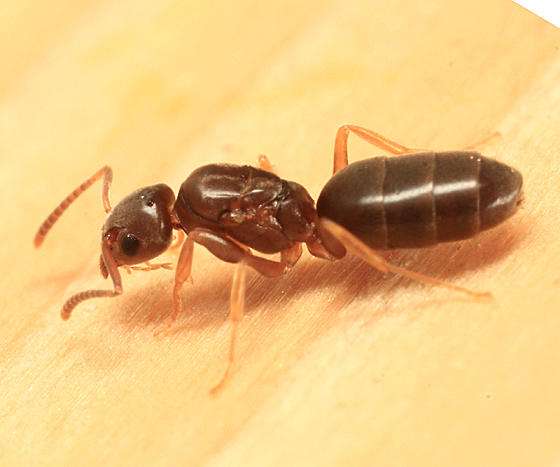
An ant subfamily known as Dorylinae is found in both the Old and New Worlds. It is believed that the Dorylinae genera first appeared between 102 and 74 million years ago. After that, they had rapid adaptive radiation events in their early history.
Identification
Worker
Easily identified by the broad and convex sternite of the helcium, the exposed abdominal spiracles of segments V–VII, and the metapleural gland opening covered by a dorsal cuticular membrane.
Queen
Except perhaps for the extremely specialized “dichthadiigyne” queens of the genuine army ants, queen Doryline gynes share many worker traits and are distinguishable by the same putative synapomorphies as the worker. The latter could be challenging to identify from specialized queens of Leptanilla, Onychomyrmex, or Simopelta that have convergently evolved. The presence of posteriorly displaced abdominal spiracles V–VII that are evident on the gaster without abdominal sclerite dissection or distension may be the one characteristic that best distinguishes dichthadiigynes from Dorylinae.
Male
The absence of cerci, nearly universal bispinose hypopygium, and retractable genital capsule are indicators. Leptanilloides does not possess the final two features, but it also lacks the cerci. Additionally, Leptanilloides possess severely diminished tegulae or none at all, which may be unique among male ants.

Distribution
All continents, with the exception of Antarctica, have dorylines, which are most common in tropical areas of the planet. A few species have a distribution that extends into the warm temperate zone.
Biology
The few dorylines for which foraging biology is known frequently prey on other ants or social insects, while notable exceptions do occur and some of the charismatic “army ants” evolved more generalist predatory tendencies.
Table





